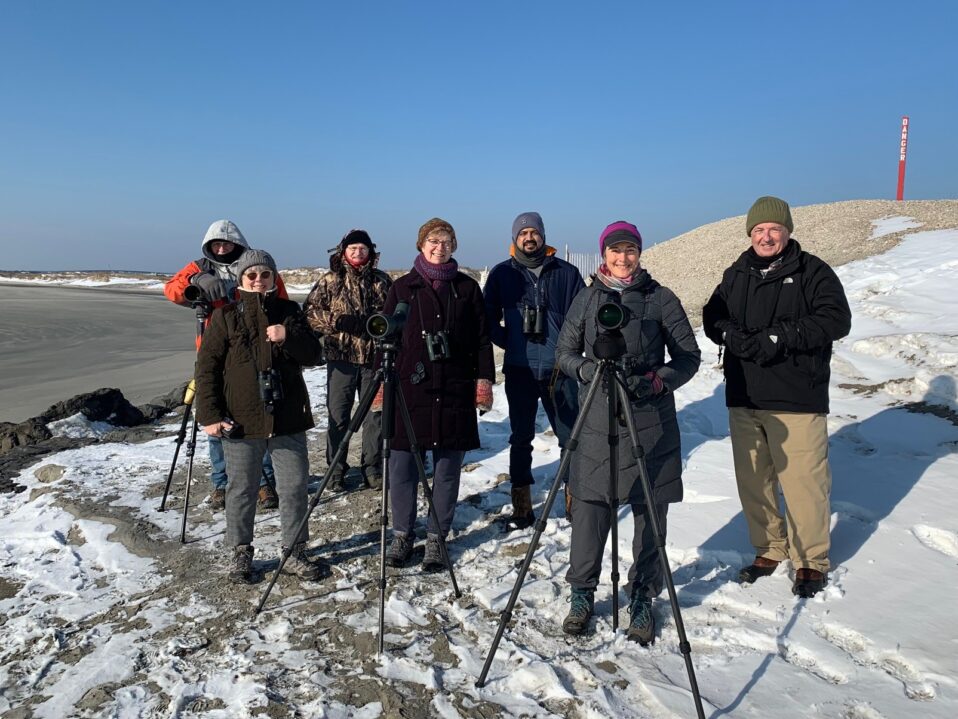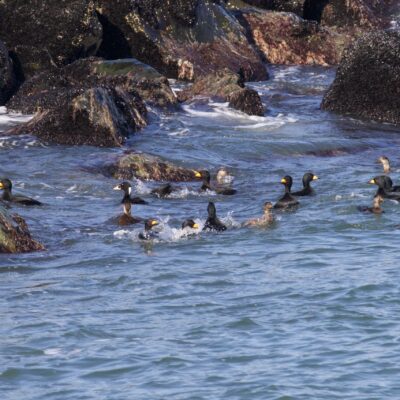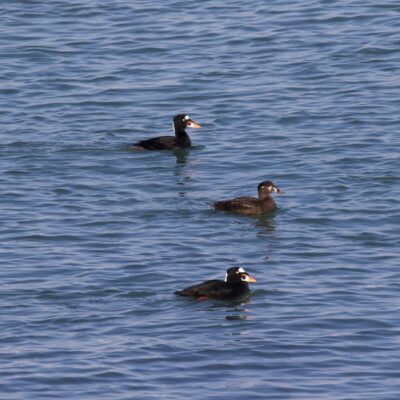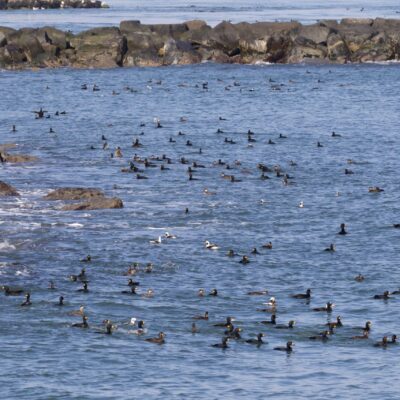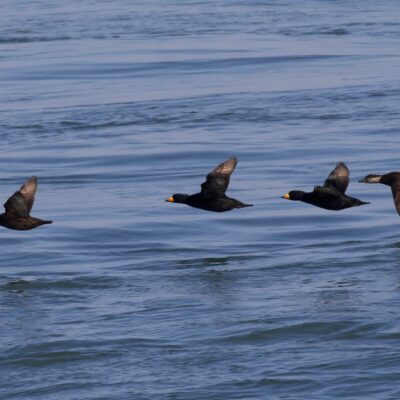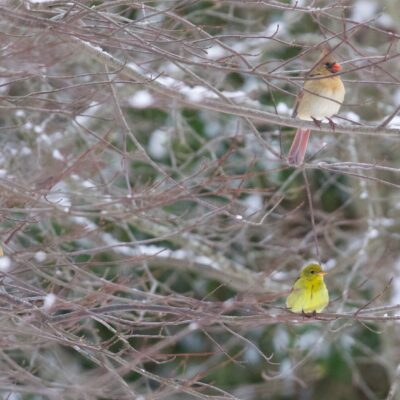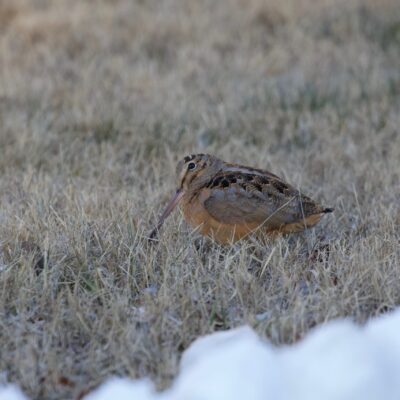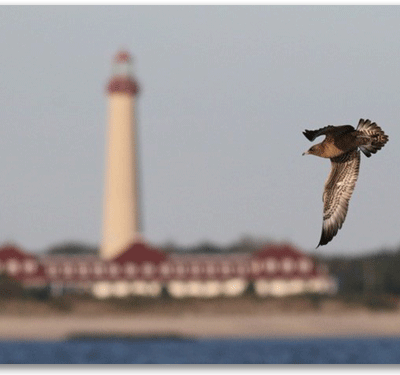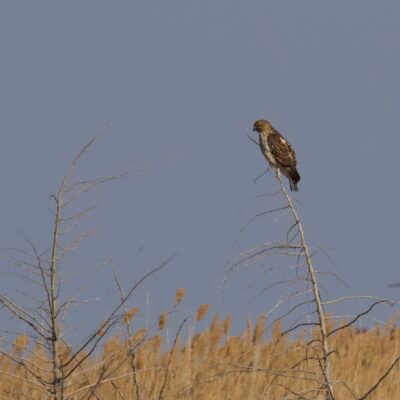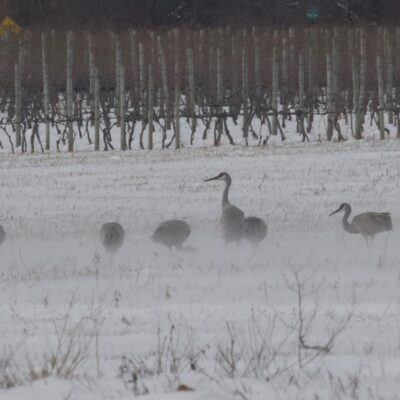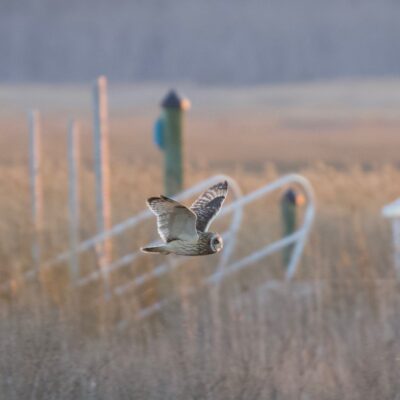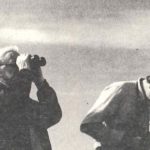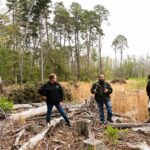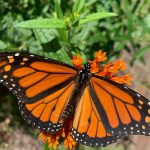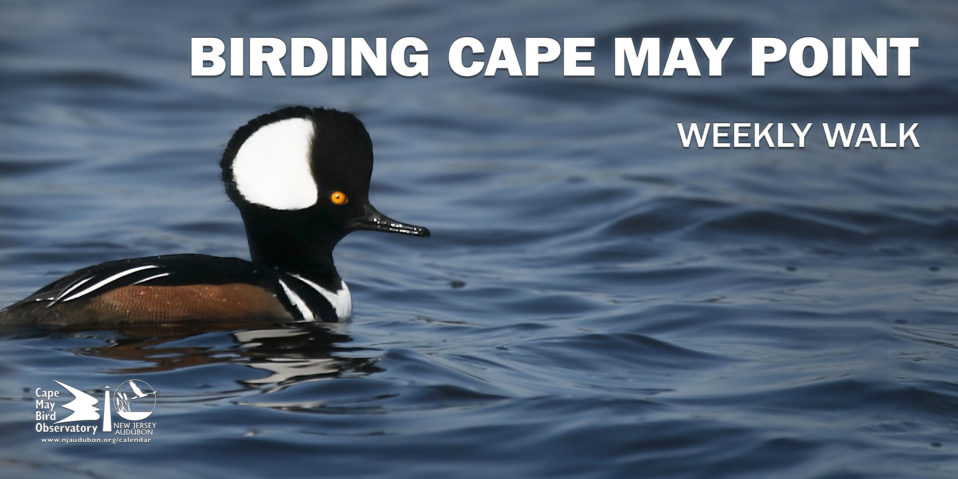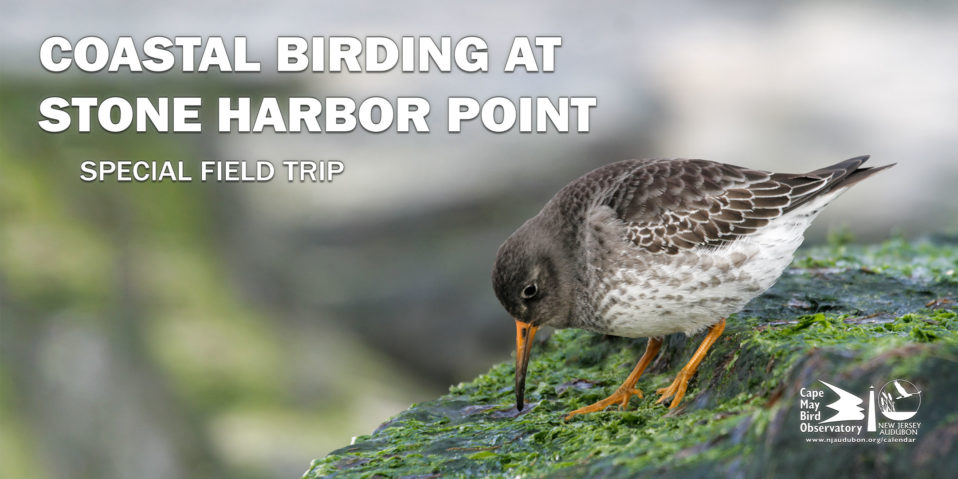Despite a chill in the air and snow on the ground, the Cape May Bird Observatory’s recent Best of Winter Birding two-day workshop was a huge success. Focused on enjoying the wide range of waterfowl, raptors, shorebirds, sparrows and other landbirds that bring color and sound to the winter landscape, participants covered the Cape May area and adjacent locales along the Delaware Bayshore and Atlantic Ocean north to Edwin B. Forsythe NWR.
In all, a total of 93 species was recorded, including 17 species of ducks, 9 species of vultures, eagles, hawks and falcons, 9 species of shorebirds and 8 species of sparrows. Highlights included good looks at Common and Red-throated Loons, close-up views of calling immature Red-shouldered Hawks, a Peregrine Falcon unsuccessfully pursuing prey, a Marbled Godwit trying to hide amidst sleeping American Oystercatchers, Sandhill Cranes feeding while oblivious to blowing snow, clear views of an American Pipit on the edge of a parking lot, a Baltimore Oriole and a rare Western Tanager coming to a feeder, and the surreal sight of two Short-eared Owls hunting in the golden light before sunset. A gorgeous, healthy Red Fox helped to finish the day off right.
Two natural events also helped to elevate the weekend. One was a large gathering of sea ducks (350+)—Black Scoters, Surf Scoters and Long-tailed Ducks—along the rocky shoreline and jetties of Avalon. Actively diving and feeding in the near-shore waters and on mussels attached to the rocks and viewed in perfect light, it was a joy to see the level of activity and interactions between males and females. Better yet, we were almost constantly serenaded by the eerie plaintive whistles of the male Black Scoters (the majority of ducks observed)—an experience to be remembered.
The second event showcased the effects of winter weather, the adaptability/vulnerability of American Woodcocks and the difference humans can make. A “shorebird” in name only, woodcocks are generally found in the leaf litter of wooded areas and can overwinter in decent numbers in South Jersey, feeding almost exclusively on earthworms they extract from soft ground. The arrival of a thick layer of snow or ice can dramatically affect survivability by limiting areas available for feeding—and this was what happened in the middle of last week (a couple days before the workshop). Able to survive several days without feeding—depending on fat reserves—it is during these stressful times of extended snowcover that American Woodcocks are forced to find food in exposed areas, often on roadsides or warmer areas near houses where the snow has melted or been removed. For this reason, we were able to view several woodcocks close-up, with their unique movements, as they fed right alongside Sunset Blvd. and in residential yards. Having experienced this type of event before, Cape May locals often clear areas of snow to expose the softer leaf litter and roadside grasses by natural areas, and are often rewarded with multiple woodcocks taking advantage of these exposed feeding areas. As they say, “build it” and they will come. You too can make a difference in unexpected ways.
Want to join the birding fun? Be sure to check out the full schedule of upcoming field trips and workshops at New Jersey Audubon’s calendar of events.
By Brett Ewald, Director Cape May Bird Observatory




